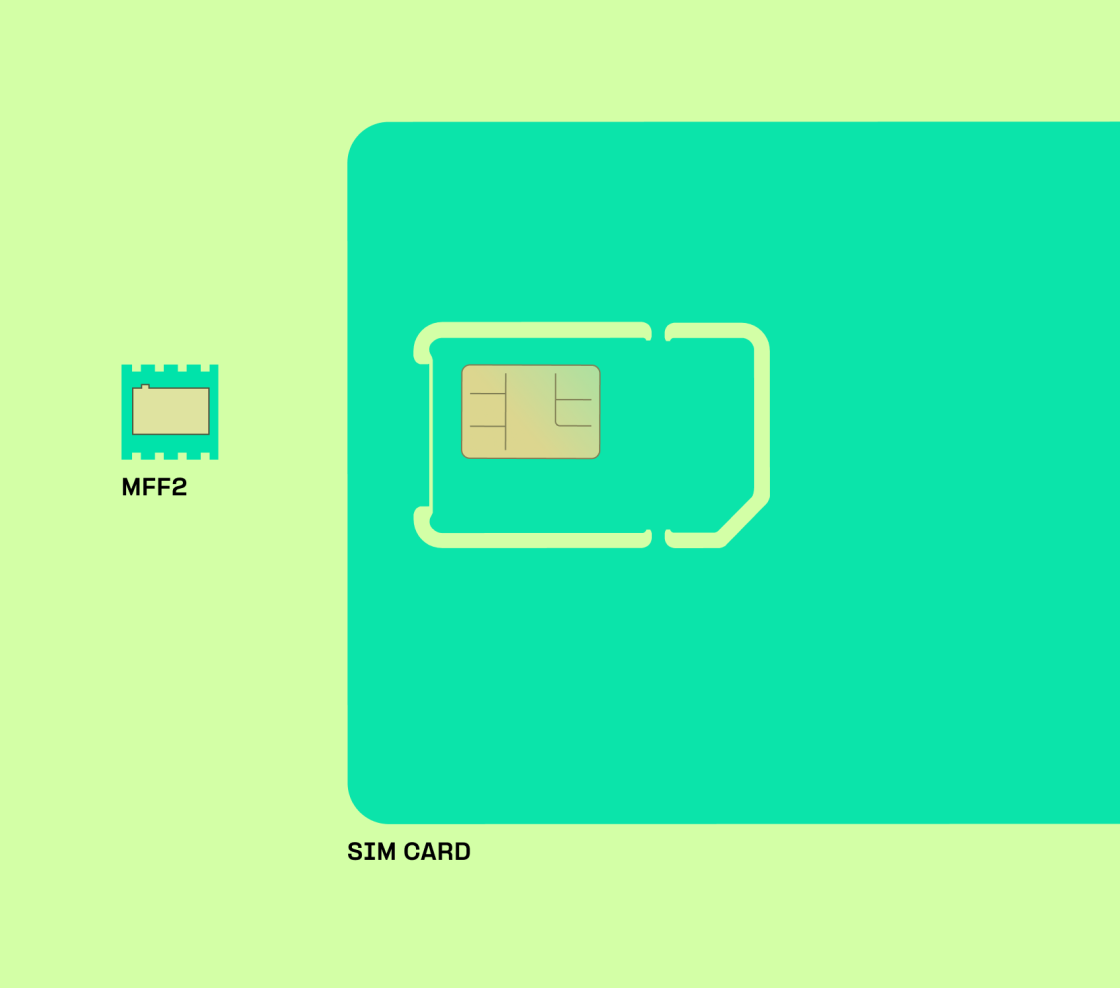Connectivity Technologies In IoT Evaluating IoT Connectivity Technology Pros and Cons
Managed IoT Connectivity Services Security and Connectivity in IoT
The evolution of smart homes has remodeled the way in which we interact with our living spaces. At the core of this transformation lies the necessity for efficient IoT connectivity options. These solutions integrate various devices, enabling seamless communication and automation, making life extra convenient and environment friendly.
IoT, or the Internet of Things, refers back to the interconnected community of units that communicate over the web. For smart properties, this implies appliances, security systems, heating and cooling units, and even lighting may be managed remotely and work at the aspect of one another. Selecting one of the best IoT connectivity options is thus essential for guaranteeing optimal efficiency and a cohesive smart residence expertise.
IoT Connectivity Sim Growth of Usable IoT Satellites
Firstly, Wi-Fi stays a dominant alternative for connecting smart house gadgets. Its widespread availability and compatibility with nearly all smart units make it an accessible choice. High-speed internet connections improve the functionality of smart gadgets, allowing them to function smoothly. However, because the number of gadgets in a home will increase, competition for bandwidth might result in connectivity points.
Zigbee is another distinguished connectivity answer, significantly favored for its low power consumption and mesh networking capabilities. This protocol enables units to communicate with one another instantly, enhancing reliability and vary. Zigbee gadgets type a mesh community, meaning that they'll relay messages to and from one another. This is especially useful for bigger houses the place Wi-Fi alerts might wrestle to cowl every area.
IoT Connectivity Security Future of IoT Technology Connectivity
Z-Wave serves as an various to Zigbee with related advantages however some distinct differences. Z-Wave’s focus on house automation ensures that gadgets from various manufacturers can coalesce into a unified network. The know-how is designed primarily for smart house units, making it extremely specialised. Moreover, while Zigbee operates on the 2.4 GHz frequency, Z-Wave utilizes lower frequencies, which may present higher penetration via partitions and different obstacles.
Bluetooth is commonly used for short-range gadget communication. Its low energy consumption is ideal for gadgets that don't require continuous connectivity. Many smart home products, similar to smart audio system and lights, utilize Bluetooth, allowing for simple pairing and use. However, its limitations in vary mean it is sometimes not suitable as a spine for a whole smart home system.
LPWAN, quick for Low Power Wide Area Network, caters to gadgets that require long-range communication whereas consuming much less energy. Technologies like LoRa and Sigfox fall beneath this category. These networks are significantly advantageous for sensors and devices spread out over massive areas. In smart homes, they can be utilized for environmental monitoring systems that track temperature, humidity, or air quality.
IoT Connectivity Sim Security and Connectivity in IoT
Cellular networks provide an various choice for connecting smart units, notably in areas the place Wi-Fi isn’t reliable. Cellular technology allows devices to connect on to cellular networks, which could be useful for houses in remote locations. While generally dearer than different options, the reliability and coverage of cellular networks make it a worthy consideration.
The integration of multiple connectivity options is vital for achieving an adaptable smart home. A hybrid system that combines Wi-Fi, Zigbee, Z-Wave, and Bluetooth can successfully address various wants within a smart home. This method ensures that units can communicate successfully, no matter their individual necessities or limitations.
Security should be a major concern when choosing IoT connectivity solutions. Each protocol comes with its personal set of vulnerabilities, and as smart houses turn into extra prevalent, the potential for cyber threats increases. Manufacturers prioritize securing connections by way of encryption and common updates, but users should also take proactive measures, corresponding to changing default passwords and organising two-factor authentication.

Interoperability remains a big problem within the house of smart home connectivity. Different manufacturers typically use proprietary technologies, resulting in compatibility points. Solutions that prioritize open standards are more and more most well-liked, as they allow for seamless integration of gadgets from various manufacturers. This flexibility enables consumers to customize their smart home systems without being locked right into a single model.
IoT Cloud Connectivity Choosing the Right IoT Connectivity
In addition to enhancing connectivity between gadgets, IoT options should also concentrate on consumer experiences. The management interfaces supplied by producers, whether or not via cellular apps or web platforms, must be intuitive and user-friendly. Consumers ought to be able to easily manage and automate their gadgets without extensive coaching or technical know-how.
Cloud-based options are an indispensable element of modern smart properties. They provide centralized management, information analytics, and distant access capabilities. By utilizing cloud companies, customers can control their smart houses from anywhere on the planet. This is especially helpful for security monitoring and adjusting home settings whereas away, making certain peace of mind.
As smart home expertise continues to evolve, it holds the potential to considerably reduce energy consumption. IoT gadgets could be programmed to function throughout off-peak hours or regulate settings based mostly on real-time information, such as electrical energy charges. This not only reduces costs for owners but in addition contributes positively to environmental sustainability.
IoT Connectivity Policy Growth of Usable IoT Satellites
Looking into the future, the demand for more advanced and efficient IoT connectivity solutions will solely develop. As consumer consciousness and adoption of smart technologies improve, the focus will shift in course of creating extra integrated ecosystems. Innovations like synthetic intelligence and machine studying can further improve the functionality of smart houses, enabling gadgets to learn consumer preferences and automate processes dynamically.
The development of 5G know-how is ready to Full Report revolutionize smart home connectivity. Its greater speeds and decrease latency can expand the probabilities for real-time data transmission and control. With this development, devices can communicate instantaneously, paving the way for extra complicated and interdependent methods.

In conclusion, as the panorama of smart properties continues to increase, exploring one of the best IoT connectivity solutions becomes crucial. Each know-how offers unique advantages and challenges, and the optimum answer typically involves a combination of a number of. Understanding the nuances of each protocol permits homeowners to create techniques tailor-made to their specific wants, in the end resulting in more efficient, safe, and pleasant residing areas.
- Wide Area Networks (WAN) facilitate long-range connectivity, making certain that smart gadgets talk effectively throughout larger properties or neighborhoods.
- Low Power Wide Area Networks (LPWAN) are excellent for connecting battery-operated units, offering prolonged battery life and longer transmission distances while sustaining low costs.
- Wi-Fi 6 technology enhances smart house systems' effectivity by supporting multiple gadgets concurrently, making certain seamless connectivity with out latency issues.
- Bluetooth Mesh Networks enhance the range of Bluetooth devices, permitting for a extremely efficient communication community among smart gadgets all through the house.
- Zigbee is an energy-efficient protocol designed specifically for smart residence units, providing strong security features and straightforward integration with various platforms.
- Thread know-how creates a scalable, resilient network for related gadgets, making certain low energy consumption while additionally supporting direct, safe communication.
- Cellular IoT solutions present reliable connectivity with out depending on native infrastructure, making them invaluable for remote monitoring and management of smart home gadgets.
- Satellite connectivity can serve areas with restricted ground community coverage, facilitating smart home options in rural or isolated regions.
- Hybrid connectivity approaches mix a number of technologies to make sure uninterrupted service, optimizing efficiency based mostly on the house's specific necessities and structure.
- Edge computing capabilities in smart home ecosystems improve information processing speed and scale back latency, permitting for smarter and more responsive device interactions.undefinedWhat are the top IoT connectivity solutions obtainable for smart homes?
IoT Network Connectivity Benefits and Use Cases of Connectivity Technologies

The greatest IoT connectivity solutions for smart homes embody Wi-Fi, Zigbee, Z-Wave, Thread, and LoRa. Each of those technologies provides unique advantages depending on factors like vary, energy consumption, and system compatibility.
How do I choose the most effective connectivity resolution for my smart residence devices?
Industrial IoT Connectivity Infrastructure and Connectivity for IoT Devices
Consider elements like the types of devices you should connect, the vary required, and energy consumption. Wi-Fi is commonly greatest for high-bandwidth applications, whereas Zigbee and Z-Wave are excellent for low-power devices over quick distances.
Is Wi-Fi an excellent choice for all smart home devices?
Aws IoT Connectivity Market for IoT Connectivity Management Platforms
While Wi-Fi supplies high bandwidth, it can consume more power and will not be appropriate for all low-power IoT units (Wireless IoT Connectivity). For smaller units like sensors, Zigbee or Z-Wave could be extra environment friendly.
What is the difference between Zigbee and Z-Wave?
Zigbee operates on 2.4 GHz and has a larger number of compatible devices, while Z-Wave makes use of sub-GHz frequencies, allowing for better penetration through walls. Both are nice for low-power, low-bandwidth purposes.
IoT Connectivity Types Evaluating IoT Connectivity Technology Pros and Cons
Can I combine multiple connectivity options in my smart home?
Yes, many smart house ecosystems allow integration of multiple protocols. Using a sensible hub can help manage gadgets that operate on different connectivity standards seamlessly.
IoT Connectivity Pricing Managing IoT Connectivity Effectively
How secure are these IoT connectivity solutions?
Security ranges vary by know-how. Zigbee and Z-Wave use encryption to secure information transmission, while Wi-Fi safety is decided by your router settings. Regularly updating firmware can help improve safety for all devices.
IoT Connectivity Provider Overview of Cellular IoT Connectivity
What is the role of a sensible hub in IoT connectivity?
- IoT Connectivity Pricing
A smart hub centralizes management of various smart home devices, permitting them to speak and work together even if they use totally different connectivity protocols. It simplifies automation and management.
Are there any costs associated with implementing these solutions?
IoT Connectivity Sim Tactics for Overcoming IoT Connectivity Challenges
Costs can vary greatly based on the expertise chosen and the variety of units. Initial setup costs might embrace purchasing compatible gadgets, smart hubs, and ongoing energy bills.
How do I ensure my devices stay YOURURL.com suitable as know-how evolves?
Opt for gadgets that observe open standards and are regularly updated. Using a well-known brand or a smart house platform that prioritizes compatibility can also assist cut back future compatibility points.